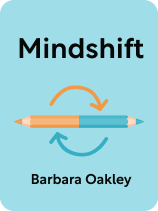

This article is an excerpt from the Shortform book guide to "Mindshift" by Barbara Oakley. Shortform has the world's best summaries and analyses of books you should be reading.
Like this article? Sign up for a free trial here.
Would you like to go back to school? Are you worried that you don’t have the time or money to do it?
If you want to learn something new but aren’t in a position to bankroll a degree, MOOCs might be the answer for you. They’re growing in popularity for a reason. Barbara Oakley discusses the pros and cons of MOOCs in her book Mindshift.
Continue reading to learn the advantages of MOOCs, their disadvantages, and advice on how to make the most of them.
MOOCs
Going back to school to earn a degree (or another one) can open new doors. But, the time and financial commitment may be prohibitive. The solution for many people is MOOCs—massive online open courses. These are classes you can access through the Internet. We’ll look at the advantages of MOOCs as well as some tips to get the most out of them.
(Shortform note: One major consideration is whether you would be a part-time or full-time student, both of which have their pros and cons. But, even if you can manage your time well enough, is it worth the expense? If you’re thinking of earning a degree in the hopes of getting a higher-paying job, consider the numbers: One report states that most people get their college investment back within 10 years or less after graduation, but around 25% don’t earn it back even after 20 years. To give you a rough idea of your potential return on investment, compute a degree’s Price-to-Earnings Premium. If you’re aiming for an advanced degree, you can get an estimate of your debt-to-income ratio two years after graduation here.)
Oakley writes that there’s a MOOC for virtually anything you want to learn, and some are even offered by prestigious universities.
(Shortform note: Since Mindshift was published in 2017, there has been increased interest in MOOCs, especially as the Covid-19 pandemic restricted in-person learning. MOOC providers saw a spike in new users; for instance, Coursera, the top MOOC provider, more than doubled their new users, going from eight million in 2019 to 20 million in 2020.)
The Advantages of MOOCs
One advantage of taking online classes is they’re free or significantly cheaper than enrolling in an in-person course. Other advantages include flexibility since you can watch the recorded lessons on your own time, and networking, since you take classes with students from around the world. You also don’t have to limit yourself to one area of study—Oakley says some people take a dozen or more MOOCs at a time to obtain the equivalent of an advanced degree.
(Shortform note: You can customize the MOOCs you take so that you can get the equivalent of a degree, but some employers may still give more weight to an actual degree. If you’ve beefed up your skills using MOOCs instead of traditional schooling, one way to get employers’ attention is through social media: Connect with potential employers (keeping in mind that you might have better luck with smaller companies) and impress them by having a professional profile, sharing certifications, and posting your analysis of the latest industry issues.)
Oakley cautions that there are also disadvantages to MOOCs. Being fully in control of your learning means you might waste time taking classes you don’t need. You should be disciplined enough to make time for the classes and the coursework—no one else is going to push you to do so. Additionally, MOOCs typically don’t give you a recognized degree, even if you do gain equivalent knowledge. And, while MOOCs allow you to connect with fellow students, the online environment doesn’t give you the same kind of interaction you would get from an in-person classroom experience.
(Shortform note: If, after weighing the pros and cons, you decide you’re ready to give MOOCs a try, there are numerous platforms offering a seemingly endless array of classes. Coursera is the biggest platform with over 100 million users, thousands of courses, and hundreds of partners (as of 2023). Udacity works with technology companies and offers training for jobs in tech. Skillshare leans toward courses in creative fields like photography and animation. Even Ivy League universities like Harvard and Yale offer courses online—some for free!)
How to Make the Most of MOOCs
Oakley has some advice to help you manage the downsides and maximize your MOOC experience. She says you should first be clear about your learning goals, then consider which online courses will help you meet those goals. Do your due diligence and get a full picture of what each course offers, the prerequisites and time commitment it requires, and what reviewers say about it.
One major factor to consider is the instructor. They should be an expert in what you want to learn, use tools (such as powerful visuals, editing, and music) to enhance the online learning experience, and inject humor into the course. Oakley explains that humor not only makes learning more enjoyable but also releases dopamine, which gives your brain a break and thus prevents it from becoming overloaded.
Additionally, Oakley recommends looking for MOOCs that go beyond lectures, offering games, quizzes, and a final project that requires you to apply what you’ve learned. Also, check if you’ll have access to discussion forums so you can connect with fellow learners.
| Increase Your Chances of Completing Your Online Course While being clear about your learning goals, having an engaging instructor, and signing up for innovative classes can make MOOCs more rewarding, there’s a big possibility that you might not finish your chosen course. Data suggests that the completion rates for self-paced courses are anywhere from just three to 15%. (It’s worth noting that this data is from 2019, prior to the MOOC boom during the pandemic.) One way to increase your chances of completing a course is to choose a more structured cohort-based program, meaning one that you take with a group of people at the same time. Such courses have a much higher completion rate, at 85-90%. This may be because of direct access to instructors and fellow learners as well as typically higher costs, which make learners more invested. Another way to help you finish an online course is to choose one that’s optimized for your smartphone—learners tend to finish courses faster on smartphones compared to desktop computers, possibly because phones offer more flexibility for learning on the go. |
Since signing up for a MOOC is meant to help you manage your time, Oakley asserts that you shouldn’t waste your time finishing a course that doesn’t meet your needs. She recommends that you try a course for a week and move on if it isn’t a good fit. (Shortform note: Though persistence is an important quality for mindshifters, it’s equally important to know when to quit. One way to determine if you should drop a course is to ask yourself, “Why do I want to quit now?” Reflecting on this will help you recognize if it’s a fleeting urge you should ignore or something more persistent.)
Finally, don’t overwhelm yourself by signing up for too many MOOCs at once—most courses run regularly so you’ll have a chance to take them later on.
(Shortform note: Taking too many MOOCs at once could result in cognitive overload, a situation wherein too much information overwhelms your brain. By trying to be hyper-productive and taking too many classes at once, you run the risk of decreasing your thinking capacity. Aside from managing the number of courses you take, you can preserve your mental energy by getting rid of distractions—by muting notifications on apps, for example—and by limiting the decisions you have to make every day. For example, have a salad for lunch every day instead of thinking about what to eat each time.)

———End of Preview———
Like what you just read? Read the rest of the world's best book summary and analysis of Barbara Oakley's "Mindshift" at Shortform.
Here's what you'll find in our full Mindshift summary:
- That it's never too late to make a career change
- How to overcome the mental barriers that hold you back
- Why career shifts are essential in the fast-changing world






